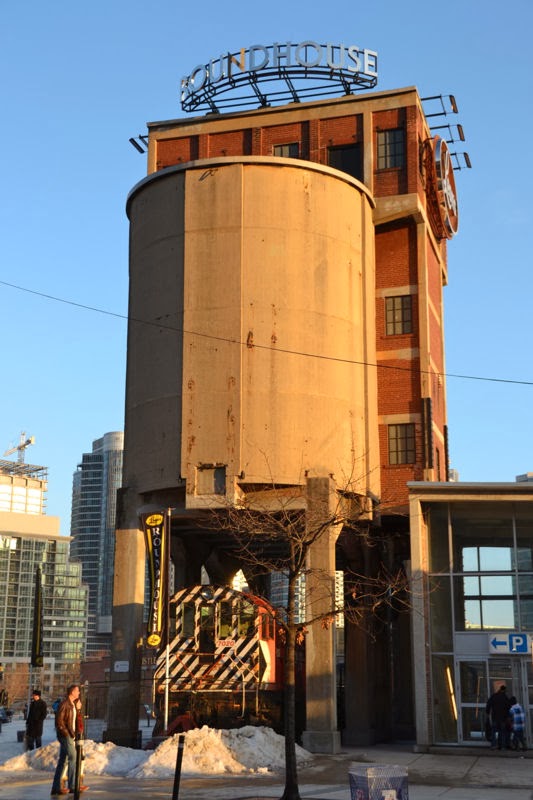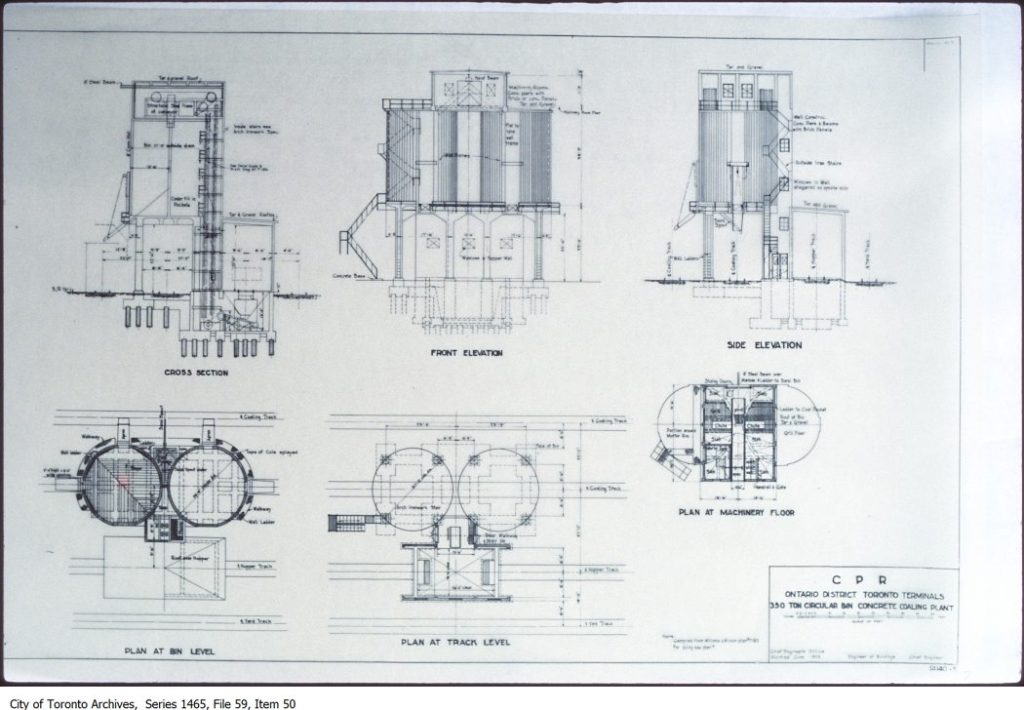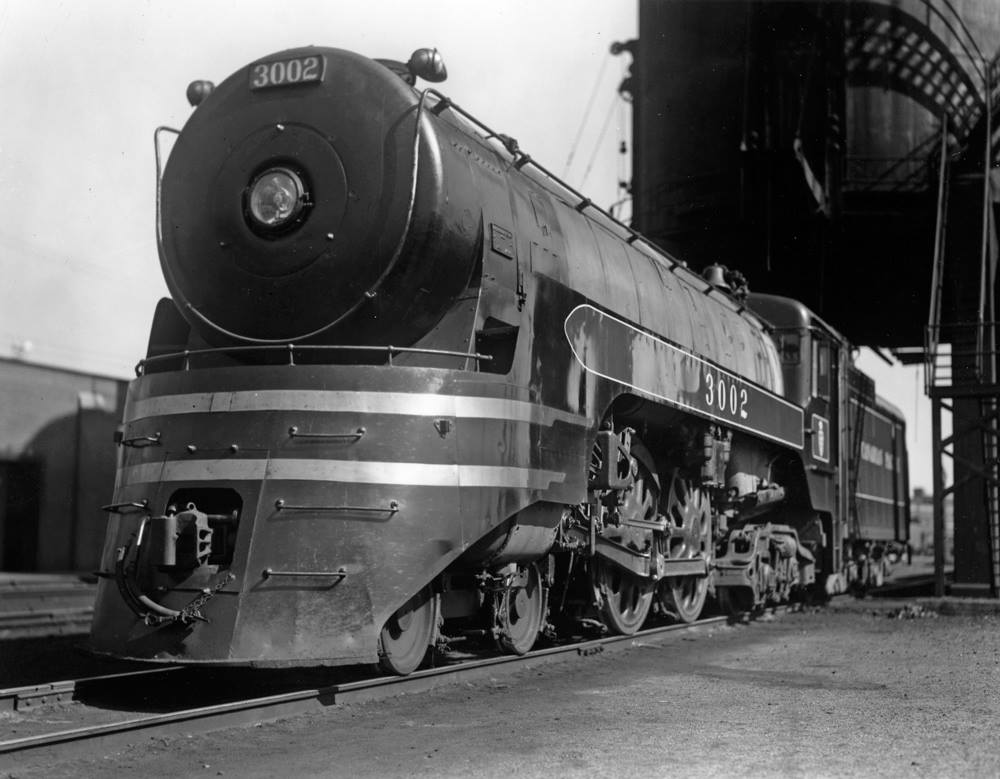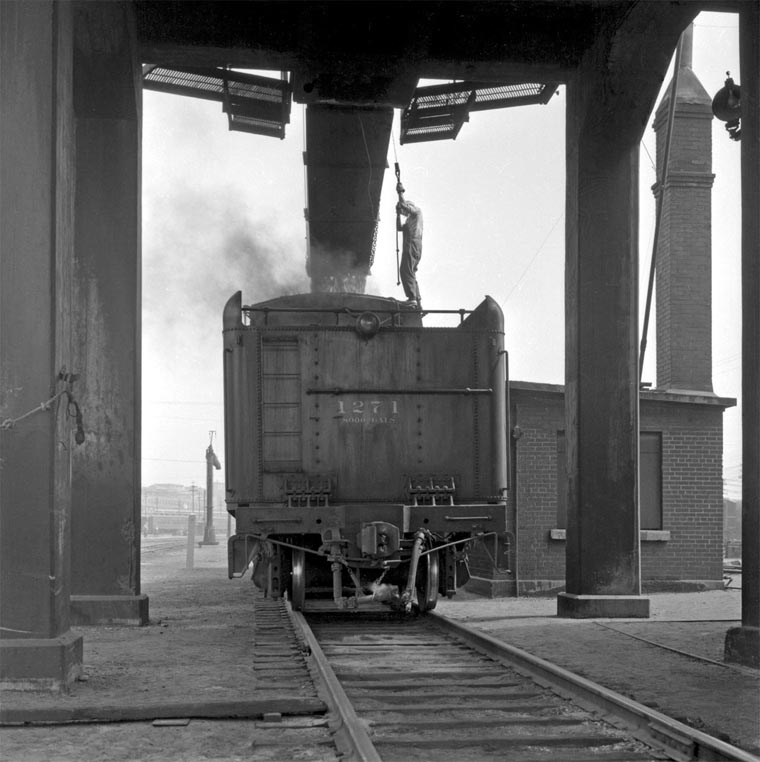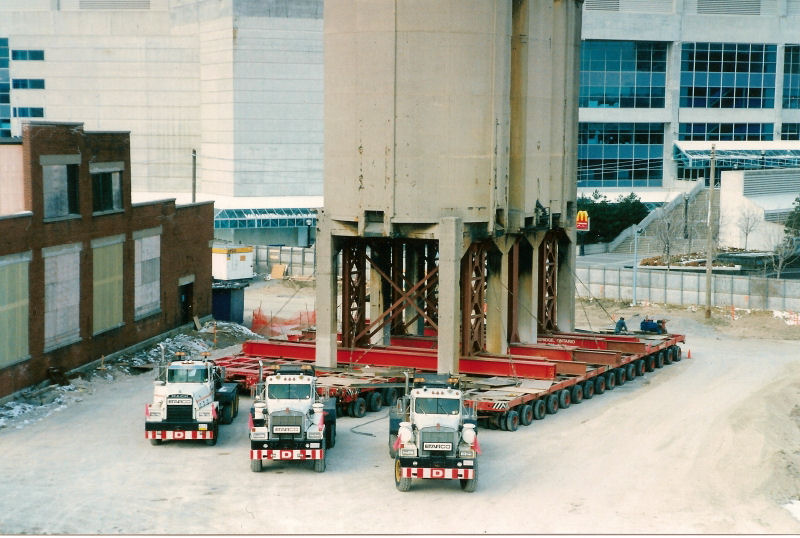Coaling towers were a common piece of infrastructure during the steam era. They were used to drop coal into a steam locomotive’s tender, which trailed immediately behind the cab of the engine. The earliest coaling towers were made mostly from timber, but these were largely replaced by more durable concrete structures into the early 20th century. While it wasn’t exclusive, coaling towers were often one of several structures designed to service steam locomotives at major rail terminals. Our 75-foot high concrete coaling tower was built in 1929 while construction of the John Street Roundhouse was underway. In addition to coal, the tower was also designed to fill locomotives with sand which they used for traction when the rails were slippery. Once the last remaining steam engines were taken out of revenue service in 1960, coaling towers largely became obsolete to the railway’s needs. While countless were torn down in the decades that followed, a surprising number of coaling towers were kept solely because they would be too costly to tear down. Our tower, along with the rest of the roundhouse, was donated by Canadian Pacific to the City of Toronto in 1988 for a future railway museum.
On January 24th, 1995, our coaling tower was moved 600 feet from what is now the corner of Lower Simcoe Street and Bremner Boulevard to the north west corner of the roundhouse. The silos of the tower were underpinned with steel bracing, and the entire structure was moved on three huge rubber tired trailers. The moving company, ETARCO, claimed this 350-ton coaling tower was the heaviest single object ever moved in Canada. The move was necessitated by the southern expansion of the Toronto Convention Centre, which was carried out from 1994 to 1997.
Simultaneously, bays 1-11 of the roundhouse were disassembled and later re-erected and occupied by Steam Whistle Brewing. Unfortunately the 360-foot long brick stores building was demolished, losing a potentially valuable asset for the Toronto Railway Museum. The John Street facility once comprised 43 structures, of which only three survive: the roundhouse and machine shop, the coaling tower and the water tower.


